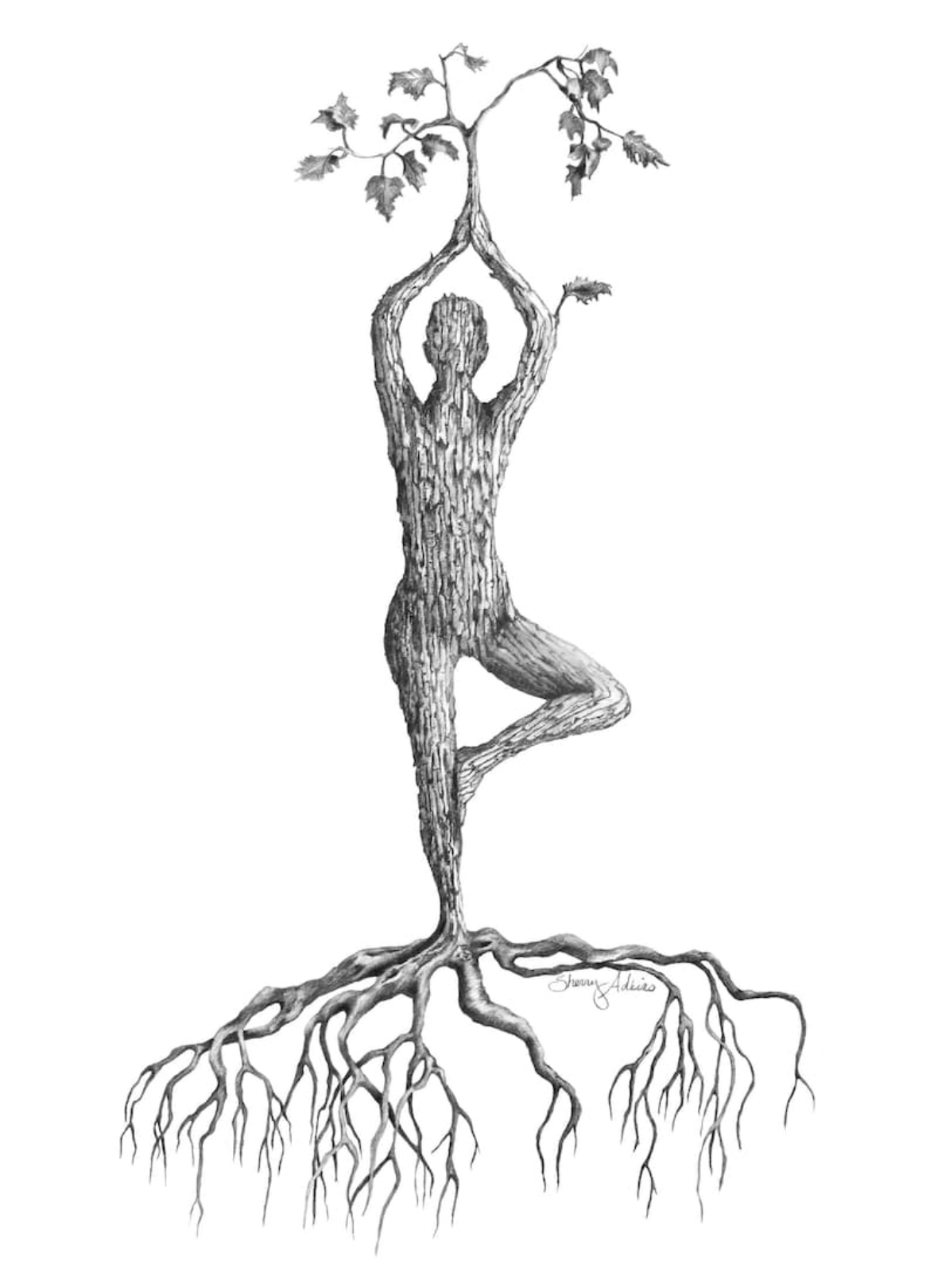Osteoporosis and other bone weaknesses are primarily caused by excessive calcium loss and inadequate vitamin D. Animal protein, excess salt, caffeine, tobacco, and physical inactivity are part of the problem, but here’s the good news and it doesn’t include milk.
Calcium can be found in dark green leafy vegetables, tofu made with calcium sulfate, calcium-fortified soy milk and orange juice, as well as many other non-dairy products.
Calcium is the most abundant mineral in the body. Its required for muscle contraction, blood vessel expansion and contraction, hormones, enzymes, and transmitting impulses throughout the nervous system. The body strives to maintain constant concentrations of calcium in blood, muscle, and intercellular fluids, though less than <1% of total body calcium is needed to support these functions.
The remaining 99% of the bodys calcium supply is stored in the bones and teeth where it supports their structure. Bone undergoes continuous remodeling, with constant resorption and depositing of calcium into new bone and the balance changes with age. Bone formation in growing children is different from adults and changes again in aging adults. In postmenopausal women bone loss increases the risk of osteoporosis over time.
The Food and Nutrition Board (FNB) established adequate intakes for amounts of calcium required to maintain bone health in healthy people. Higher levels are often seen, but treating dietary issues with calcium should be discussed with a nutrition professional first.*
Adequate Intakes for Calcium (mg = milligrams)
| Age | Male | Female | Pregnant | Lactating |
|---|---|---|---|---|
| Birth to 6 months | 210 mg | 210 mg | ||
| 7-12 months | 270 mg | 270 mg | ||
| 1-3 years | 500 mg | 500 mg | ||
| 4-8 years | 800 mg | 800 mg | ||
| 9-13 years | 1,300 mg | 1,300 mg | ||
| 14-18 years | 1,300 mg | 1,300 mg | 1,300 mg | 1,300 mg |
| 19-50 years | 1,000 mg | 1,000 mg | 1,000 mg | 1,000 mg |
| 50+ years | 1,200 mg | 1,200 mg |
Protecting Your Bones Although many people think of dairy products for calcium as good protection for their bones, this is not at all the whole story. In fact, in a 12-year Harvard study of 78,000 women, those who drank milk three times a day actually brokemore bones than women who rarely drank milk. Similarly, a 1994 study of elderly men and women in Sydney, Australia, showed that higher dairy product consumption was associated with increased fracture risk. Those with the highest dairy product consumption had approximately double the risk of hip fracture compared to those with the lowest consumption
To protect your bones you do need calcium in your diet, but you also need to keep calcium in your bones.
How to Get Calcium in Your Bones The best calcium sources are green leafy vegetables and legumes, or Greens & Beans for short.
- Get calcium from greens, beans, or fortified foods. Broccoli, brussels sprouts, collards, kale, mustard greens, swiss chard, and other greens are loaded with highly absorbable calcium and a host of other healthy nutrients.
Note: There are exceptions. Some greens contain a large amount of calcium but tend to hold onto it, so less is available to the body.It is the oxalic acid, which is found in spinach, rhubarb, chard, and beet greens that binds with the calcium and reduces absorption. These selections are healthy choices for folic acid and vitamin K, but not considered a good source of calcium.
Beans are loaded with calcium. There is more than 100 milligrams of calcium in a plate of baked beans. If you prefer chickpeas, tofu, or other bean or bean products, you will find plenty of calcium there, as well. These foods also contain magnesium, which your body uses along with calcium to build bones.
If you are looking for a very concentrated calcium source, calcium-fortified orange or apple juices contain 300 milligrams or more of calcium per cup in a highly absorbable form.
Of course, diary products contain calcium, but it is accompanied by animal proteins, lactose sugar, animal growth factors, occasional drugs, additives, and a substantial amount of fat and cholesterol in all but the defatted versions.
- Exercise, so calcium has somewhere to go. Exercise is important for many reasons, including keeping bones strong. Active people tend to keep calcium in their bones, while sedentary people lose calcium.
- Get vitamin D from the sun or supplements if you need them. Vitamin D makes calicum more available to the body and controls the use of calcium. About 15 minutes of sunlight on your skin each day normally produces all the vitamin D you need. If you get little or no sun exposure, you can get vitamin D from a multiple vitamin. The Recommended Dietary Allowance is 200 400 IU (5 -10 micrograms) per day. Vitamin D is often added to milk, but the amount added is not always well controlled. Studies also show higher prescriptive doses of 700 -1000 IU help prevent falls and fractures in older adults.
How to Keep It There Its not enough to get calcium into your bones. What is really critical is keeping it there. Heres how:
- Reduce calcium losses by avoiding excess salt. Calcium in bones tends to dissolve into the bloodstream; it then passes through the kidneys into the urine. Salty foods can greatly increase calcium loss through the kidneys. Reduce sodium intake to 1-2 grams per day to help keep calcium in the body. Avoid salty snacks and canned goods with added sodium, and use alternatives to salt when cooking or at the table.
- Get your protein from plants, not animal products. Animal protein in fish, poultry, red meat, eggs, and dairy products tends to leach calcium from the bones and encourages its passage into the urine. Plant protein in beans, grains, and vegetables does not appear to have this effect.
- Dont smoke. Smokers lose calcium, too. A study of identical twins showed that if one twin had been a long-term smoker and the other had not, the smoker had more than a 40 percent higher risk of a fracture.
American recommendations for calcium intake are high partly because the meat, salt, tobacco, and physical inactivity of the American lifestyles. It leads to an overly rapid and unnatural loss of calcium through the kidneys. By controlling these basic factors, you can have an enormous influence on whether calcium stays in your bones or drains out of your body.
Osteoporosis in Men Osteoporosis is less common in men than in women, and its causes are somewhat different. In about half the cases, a specific cause can be identified and addressed:
- Steroid medications, such as prednisone, is a common cause of bone loss and fractures. Men taking steroids should work with a doctor to minimize the dose and to explore other treatments.
- Alcohol can weaken bones by reducing the bodys ability to make new bone cells to replace normal losses. The effect has shown to be significant with more than two drinks per day of liquor, beer, or wine.
- A low testosterone count can encourage osteoporosis. About 40 percent of men over 70 years of age have decreased levels of testosterone.
Hormone Supplements for Women Have Serious Risks Some doctors recommend estrogen supplementsfor women after menopause as a way to slow osteoporosis. The effect is not very great over the long run, and rarely able to stop or reverse bone loss. More importantly, estrogens increase the risk of breast cancer. The Harvard Nurses Health Study found that women taking estrogens have 30 to 80 percent more breast cancer, compared to other women.
Tofu as a Source of Calcium Soy products are not recommended for women at risk for breast cancer, but soy is safer in terms of its estrogenic qualities when dairy is omitted from the diet. (2004, Campbell)If you are not sensitive to soy, sources of well-absorbed calcium include calcium-fortified soy milk and juice, calcium-set tofu, soybeans and soynuts. There is as much or more calcium in 4 ounces of firm tofu as there is in one cup of cows milk.
| Calcium Content of Selected Soy Foods | ||
| Food | Amount | Calcium (mg) |
| Tofu, processed with calcium sulfate |
4 ounces | 200-330 |
| Soy or ricemilk, commercial, calcium-fortified, plain |
8 ounces | 200-300 |
| Commercial soy yogurt, plain | 6 ounces | 80-250 |
| Tofu, processed with nigari | 4 ounces | 80-230 |
| Tempeh | 1 cup | 215 |
| Soybeans, cooked | 1 cup | 175 |
| Soy milk, commercial, plain | 8 ounces | 80 |
Blackstrap molasses, tahini, almonds, and almond butter are also good sources of plant based calcium & magnesium
| Calcium and Magnesium in Foods (milligrams) | ||
| Food Source | Calcium | Magnesium |
| Collards (1 cup, boiled) | 358 | 52 |
| Orange juice, calcium-fortified (1 cup) | 350* | |
| Oatmeal, instant (2 packets) | 326 | 70 |
| Figs, dried (10 medium) | 269 | 111 |
| Spinach (1 cup, boiled) | 244 | 158 |
| White beans (1 cup, boiled) | 161 | 113 |
| Mustard greens (1 cup, boiled) | 150 | 20 |
| Navy beans (1 cup, boiled) | 128 | 107 |
| Vegetarian baked beans (1 cup) | 128 | 82 |
| Great northern beans (1 cup, boiled) | 121 | 88 |
| Black turtle beans (1 cup, boiled) | 103 | 91 |
| Swiss chard (1 cup, boiled) | 102 | 152 |
| Broccoli (1 cup, boiled) | 94 | 38 |
| Kale (1 cup boiled) | 94 | 24 |
| English muffin | 92 | 11 |
| Butternut squash (1 cup, boiled) | 84 | 60 |
| Pinto beans (1 cup, boiled) | 82 | 95 |
| Chick peas (1 cup, canned) | 80 | 78 |
| Sweet potato (1 cup, boiled) | 70 | 32 |
| Green beans (1 cup, boiled) | 58 | |
| Barley (1 cup) | 57 | 158 |
| Brussels sprouts (8 sprouts) | 56 | 32 |
| Navel orange (1 medium) | 56 | 15 |
| Raisins (2/3 cup) | 53 | 35 |
| Source: J.A.T. Pennington, Bowes and Churchs Food Values of Portions Commonly Used. (Philadelphia: J.B. Lippincott, 1994.) | ||
Reversing Osteoporosis If you already have osteoporosis, speak with your doctor about medicine as well as your health & fitness specialist about exercises, and supplements that can manage or reverse it.
Health Risks from Excessive Calcium Excessively high levels of calcium in the blood known as hypercalcemia impair kidney function, and lead to reduced absorption of other essential minerals, such as iron, zinc, magnesium, and phosphorus. However, hypercalcemia rarely results from dietary or supplemental calcium intake and is most commonly associated with hyperparathyroidism, advanced cases of cancer or excessive intakes of vitamin D from supplements at doses of 50,000 IU/day or higher. The Tolerable Upper Intake Levels (ULs) for calcium are established by the Food and Nutrition Board.
Tolerable Upper Intake Levels for Calcium
| Age | Male | Female | Pregnant | Lactating |
| Birth to 12 months | None established | None established | ||
| 1-13 years | 2,500 mg | 2,500 mg | ||
| 14-50 years | 2,500 mg | 2,500 mg | 2,500 mg | 2,500 mg |
| 51+ years | 2,500 mg | 2,500 mg |
Interactions with Medications Calcium supplements have the potential to interact with several types of medications. Individuals taking medications on a regular basis should discuss their calcium intake with their healthcare provider who has a background in nutrition. Ask, and don’t assume that your doctor is educated in nutrition.
Calcium can decrease the absorption of the following drugs when taken together: biphosphonates (to treat osteoporosis), the fluoroquinolone and tetracycline classes of antibiotics, levothyroxine, phenytoin (an anticonvulsant), and tiludronate disodium (to treat Pagets disease) .
Thiazide-type diuretics can interact with calcium carbonate and vitamin D supplements, increasing the risks of hypercalcemia and hypercalciuria. Both aluminum- and magnesium-containing antacids increase urinary calcium excretion. Mineral oil and stimulant laxatives decrease calcium absorption. Glucocorticoids, such as prednisone, can cause calcium depletion and eventually osteoporosis when they are used for months.
Recommended Intakes Calcium and other nutrients are provided in the Dietary Reference Intakes (DRIs) developed by the FNB at the Institute of Medicine of the National Academies. DRI is the general term for a set of reference values used for planning and assessing the nutrient intakes of healthy people. These values, which vary by age and gender include:
- Recommended Dietary Allowance (RDA): average daily level of intake sufficient to meet the nutrient requirements of nearly all (97%-98%) healthy individuals.
- Adequate Intake (AI): established when evidence is insufficient to develop an RDA and is set at a level assumed to ensure nutritional adequacy.
- Tolerable Upper Intake Level (UL): maximum daily intake unlikely to cause adverse health effects.
For healthy bones remember, the first part of the solution is to avoid animal protein, excess salt, caffeine, and tobacco, and to stay physically active in order to reduce calcium loss. Second, take vitamin D supplements as prescribed by your dietary expert. The usual amount is 200 IU (5 micrograms) per day, but it may be doubled if you get no sun exposure. If you have trouble absorbing calcium due to reduced stomach acid, your doctor can recommend hydrochloric acid supplements.
For more dietary information please visit: http://dietary-supplements.info.nih.gov/index.aspx
This information is designed for educational purposes and not meant to diagnose or treat a disease.
References:
Campbell, C. (2004). The China Study. New York: Benbella
Colditz GA, Stampfer MJ, Willett WC, et al. (1992).Type of postmenopausal hormone use and risk of breast cancer: 12-year follow-up from the Nurses Health Study. Cancer Causes and Control.
Composition of Foods. (2005).USDA Nutrient Data Base for Standard Reference, and Manufacturers information
Cumming RG, Klineberg RJ. (1994).Case-control study of risk factors for hip fractures in the elderly. Am J Epidemiol
Feskanich D, Willett WC, Stampfer MJ, Colditz GA. (1997). Milk, dietary calcium, and bone fractures in women: a 12-year prospective study. Am J Publ Health.
Hopper JL, Seeman E. (1994).The bone density of female twins discordant for tobacco use. N Engl J Med.
Kessler, D. (2009). The End of Overeating. New York: Rodale Books.
Khalsa, D. ((2003). Food as Medicine. New York: Atria Books
Nordin BEC, Need AG, Morris HA, Horowitz M. (1993)The nature and significance of the relationship between urinary sodium and urinary calcium in women.
Office of Dietary Supplements. (2009). National Institutes of Health.Bethesda, Md. Retrieved 11/4/09. http://ods.od.nih.gov. E-mail:ods@nih.gov.
Peris P, Guanabens N, Monegal A, et al. (1995).Aetiology and presenting symptoms in male osteoporosis. Br J Rheumatol.
Physicians Committee for Responsible Medicine. (2009) Calcium and Strong Bones. Nutrition & Preventative Medicine. Retrieved 11/2/2009. http://www.pcrm.org/health/prevmed/index.html
Remer T, Manz F. (1994).Estimation of the renal net acid excretion by adults consuming diets containing variable amounts of protein. Am J Clinical Nutrition.





